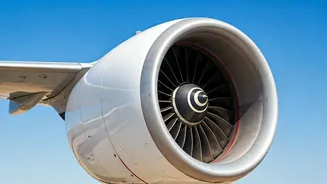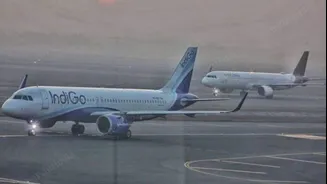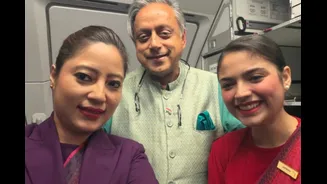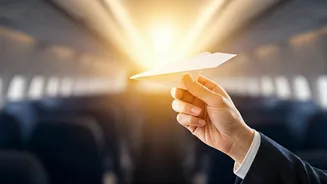Emergency Landing Declared
An Air India flight, while en route, was prompted to make an unscheduled stop in Mongolia. The decision was made due to a suspected technical problem,
indicating that the aircraft's systems may have been compromised. The pilots, adhering to established safety protocols, initiated the precautionary landing. This procedure is standard when potential issues are detected, prioritizing the safety of all passengers and crew. Such actions reflect the airline's dedication to passenger well-being and its commitment to preventing potential in-flight emergencies. The primary goal is always to address any irregularities immediately and ensure the flight can continue safely or that passengers can disembark without incident.
Immediate Safety Measures
Upon recognizing the potential technical difficulty, the flight crew immediately activated the appropriate safety measures. This involves notifying air traffic control about the situation and preparing the aircraft for landing. The crew systematically went through emergency checklists, assessing the severity of the problem and taking measures to mitigate potential risks. This could include adjusting flight parameters, communicating with the ground crew, and preparing for a potentially less-than-ideal landing. The primary concern during this process is to secure the safety of the aircraft and everyone on board. These steps are a demonstration of the rigorous training and preparedness of the flight crew, emphasizing the pivotal role they play in maintaining safety standards during unexpected incidents. The effectiveness of the rapid response directly impacts the outcome of the event, reinforcing Air India's safety-first attitude.
Passenger Experience Overview
The passengers on the flight experienced a disruption to their planned journey due to the precautionary landing. Generally, in these situations, the airline provides immediate support to minimize inconvenience. This typically includes ensuring the well-being of the passengers, offering explanations about the situation, and arranging for their onward travel. Passengers are usually provided with essential services like food, water, and accommodation if there's a significant delay. The airline also works to keep passengers informed about the progress of the repairs and the updated departure times. Air India would have strived to handle the situation with utmost care, compassion, and respect for their passengers, understanding their concern, and working to restore their trust in the airline's safety procedures.
Technical Investigation Initiated
Following the precautionary landing, Air India initiates a thorough investigation into the suspected technical issue that led to the diversion of the flight. Expert technicians and engineers examine the aircraft to determine the specific cause of the problem. This analysis involves a detailed inspection of the aircraft's systems, from engines to avionics. The goal is to accurately identify the source of the issue, and to make sure the aircraft is fit to continue the journey. This process ensures any recurring failures are prevented by appropriate maintenance. The technical analysis is a critical part of the incident response process, helping to enhance aircraft safety and operational effectiveness. All findings from the investigation are thoroughly documented, creating a valuable record to learn from for future maintenance practices.
Maintenance and Repairs
Once the technical analysis has been completed, any necessary maintenance and repairs are carried out. This could encompass anything from small adjustments to more involved replacements of components. Expert technicians use specialized tools and procedures to restore the aircraft to its optimal operational condition. Safety regulations are meticulously followed during all maintenance procedures, guaranteeing the airworthiness of the aircraft. Rigorous quality control checks are done to confirm that the repairs are accurate and that the aircraft is ready for flight. Air India ensures that all repairs are conducted with great care, adhering to the highest standards, to protect the well-being of both passengers and crew, and to avoid future technical issues, safeguarding their reputation for safety and reliability.
Flight Resumption and Protocols
Once the aircraft has been fully repaired, it is re-certified for flight, confirming it meets all safety and operational requirements. The airline then arranges for the flight to resume its journey. During this resumption, the pilots will conduct additional pre-flight checks to ensure all systems function as expected. Furthermore, the flight crew will adhere to all established flight protocols and safety procedures. Passengers are kept updated on the status of their journey, and measures are taken to restore their faith in the flight's safety. Every flight resumption underscores the airline's commitment to safety and the meticulous procedures that keep passengers safe. Air India is dedicated to maintaining the highest safety standards, and this particular incident reinforced their commitment to passenger safety.
















